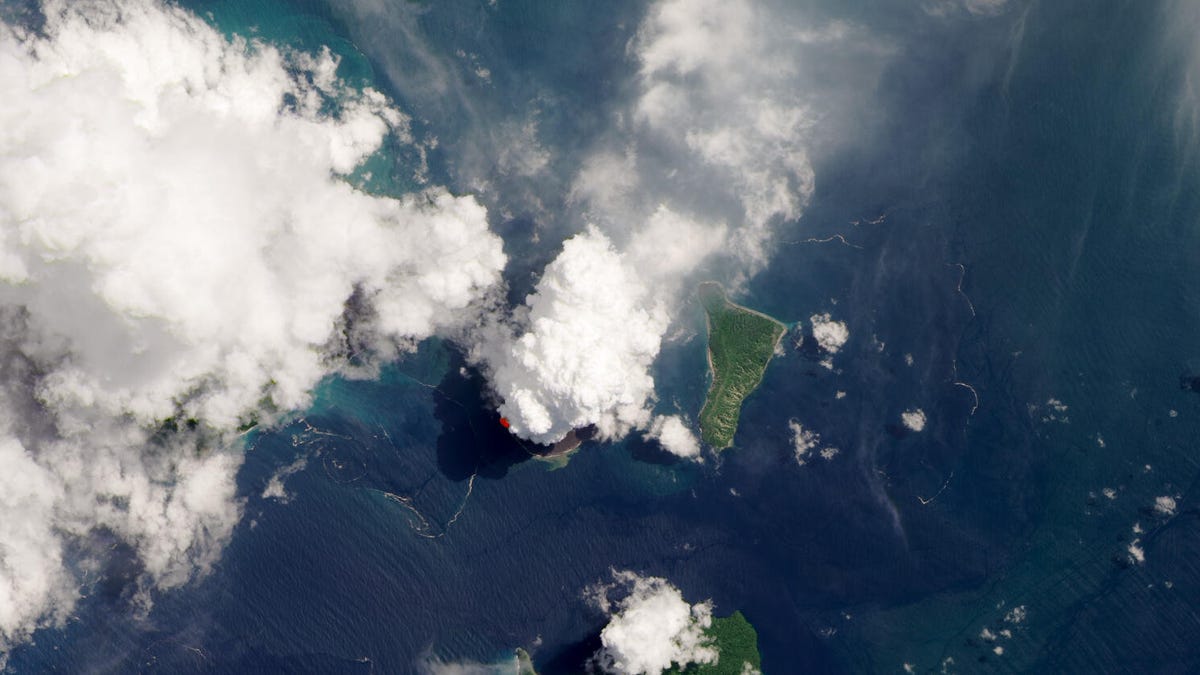Dramatic NASA view shows famous Indonesian volcano smoldering from space
Smoke and fury signifying Anak Krakatau volcanic activity.
The Indonesian volcano Krakatau, sometimes written Krakatoa, is infamous for its 1883 eruption, one of the largest and most violent in recorded history. Anak Krakatau, the volcanic island that formed from Krakatau's caldera in 1927, has been kicking up a fuss in 2020. A new satellite view shows a smoldering look at the action.
A NASA and United States Geological Survey Landsat 8 satellite image from April 13 reveals an extensive plume of gas and water vapor that resembles a fluffy cloud. The red markings indicate an infrared detection of what is likely lava.
The plume obscures most of the island. "Anak Krakatau volcano has displayed these small eruptive bursts periodically through the last few years," said volcanologist Verity Flower in a NASA Earth Observatory release on Wednesday. "However, it can also display more destructive activity such as tsunami-triggering eruptions."
One of these devastating tsunamis occurred in 2018, claiming hundreds of lives.
While the recent plume looked impressive, NASA described the volcano's April activity as "relatively small." That's a bit of good news in a time of global worry.


